Hi, i have a 6 foot red sea tank which as of 3 days ago had the following fish:
Spanish hogfish
Harlequin tuskfish
Lennardi wrasse
Longfin bannerfish
Floral maori wrasse
Purplemask angelfish
Coral beauty
Marine betta
v-tail grouper
There are 2 diseases that i have in the tank, ich, and the unknown disease i'm talking about here. at first i thought it was flukes, or maybe still is flukes, but this disease is killing fish incredibly quickly all while not leaving any visible trace.
The syptoms are pretty much some missing scales on some fish (happened on the grouper) and a lot of flashing/scratching which seems consistent with flukes. But fish also rapidly develop cloudy eyes and become blind or almost blind and seem to degrade steeply over a couple days. I have tried freshwater dips which only seem to make it worse. The eyesight loss is very rapid. I have reduced the tank to 1.014 over the course of about 15 hours (target 1.012) and this hasn't helped. Today, i found my tuskfish lying on its side breathing heavily in a corner. It's eyes had become cloudy and the fish has been hiding the past two days. I gave it a 4 minute freshwater dip, a couple minutes later it started twitching and then died. I also found my v tail grouper dead in a rock cave with cloudy eyes but as with the tuskfish, zero physically wrong with it. About a week ago i gave the grouper a freshwater bath and what seemed like a bunch of flukes came off. It hasn't eaten since then but up until a few days ago the tusk was. My bannerfish seems to be in slightly rough shape with some cloudy looking skin but swims and eats fine. My spanish hogfish has never even had a single spot of ich and is seemingly unaffected entirely by this disease. My venusta died about a week ago.
I put it in, got harassed by the coral beauty for a few hours. the next day they left eachother alone and it ate well. The next day it hid in a rock cave and the day after it was just dead. Again, nothing visibly wrong with it. My marine betta's tailfin split in 2 parts almost to the base, it then lost it's eyesight. I gave it a freshwater bath and the next morning it's eyes were almost completely opaque and it;s top lip was extended and also opaque white, it died shortly after. I can elaborate but this is already a long post and i would like some opinions. I really don't think these are flukes. Water params are 0 ammonia, o nitrite about 10ppm nitrate. Salinity was 1.021.
Also note i had about 190 volts of stray electricity in the water for a few weeks. Fixed it with a ground probe a bit over a week ago.
Right now, i have the lennardi (which is under the sand somewhere, has always been very healthy and eats well), spanish hogfish, coral beauty (who's eyesight is degrading it seems and it hides a lot), my bannerfish (eats and swimms well but has some whitish spots on the body and slightly tattered fins) and my very healthy and active spansih hogfish
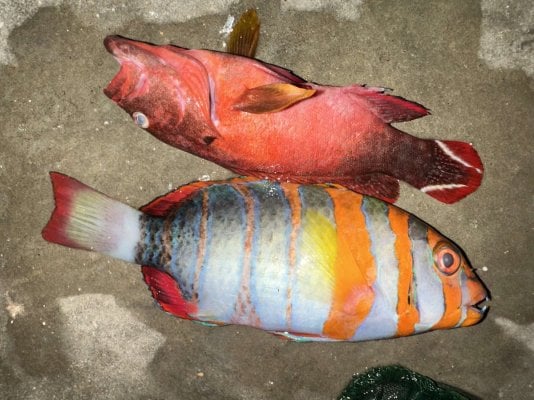
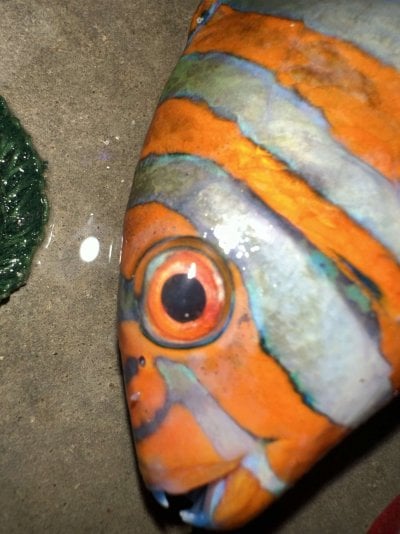
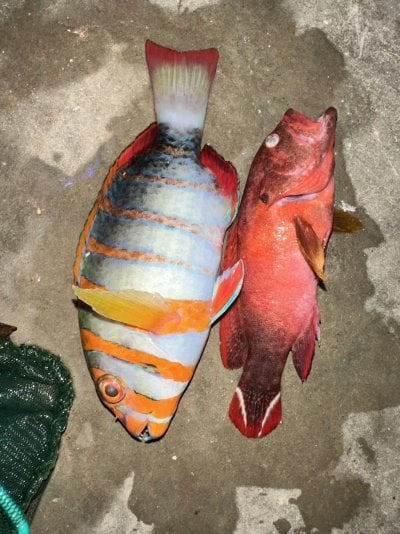
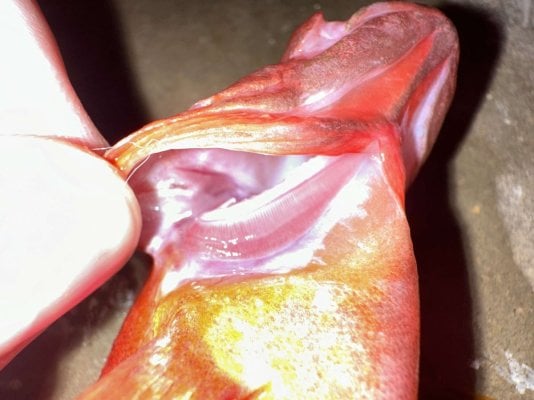
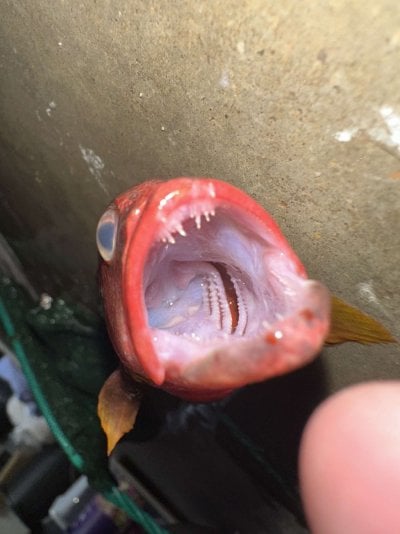
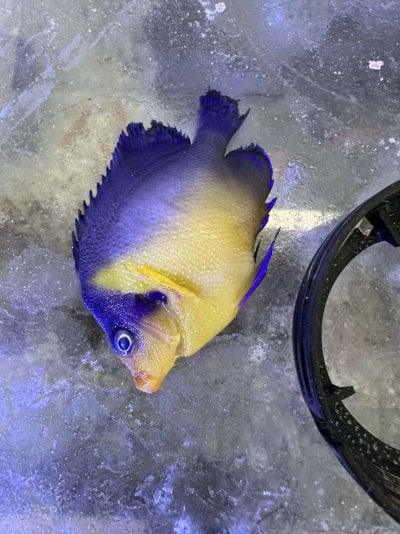
Spanish hogfish
Harlequin tuskfish
Lennardi wrasse
Longfin bannerfish
Floral maori wrasse
Purplemask angelfish
Coral beauty
Marine betta
v-tail grouper
There are 2 diseases that i have in the tank, ich, and the unknown disease i'm talking about here. at first i thought it was flukes, or maybe still is flukes, but this disease is killing fish incredibly quickly all while not leaving any visible trace.
The syptoms are pretty much some missing scales on some fish (happened on the grouper) and a lot of flashing/scratching which seems consistent with flukes. But fish also rapidly develop cloudy eyes and become blind or almost blind and seem to degrade steeply over a couple days. I have tried freshwater dips which only seem to make it worse. The eyesight loss is very rapid. I have reduced the tank to 1.014 over the course of about 15 hours (target 1.012) and this hasn't helped. Today, i found my tuskfish lying on its side breathing heavily in a corner. It's eyes had become cloudy and the fish has been hiding the past two days. I gave it a 4 minute freshwater dip, a couple minutes later it started twitching and then died. I also found my v tail grouper dead in a rock cave with cloudy eyes but as with the tuskfish, zero physically wrong with it. About a week ago i gave the grouper a freshwater bath and what seemed like a bunch of flukes came off. It hasn't eaten since then but up until a few days ago the tusk was. My bannerfish seems to be in slightly rough shape with some cloudy looking skin but swims and eats fine. My spanish hogfish has never even had a single spot of ich and is seemingly unaffected entirely by this disease. My venusta died about a week ago.
I put it in, got harassed by the coral beauty for a few hours. the next day they left eachother alone and it ate well. The next day it hid in a rock cave and the day after it was just dead. Again, nothing visibly wrong with it. My marine betta's tailfin split in 2 parts almost to the base, it then lost it's eyesight. I gave it a freshwater bath and the next morning it's eyes were almost completely opaque and it;s top lip was extended and also opaque white, it died shortly after. I can elaborate but this is already a long post and i would like some opinions. I really don't think these are flukes. Water params are 0 ammonia, o nitrite about 10ppm nitrate. Salinity was 1.021.
Also note i had about 190 volts of stray electricity in the water for a few weeks. Fixed it with a ground probe a bit over a week ago.
Right now, i have the lennardi (which is under the sand somewhere, has always been very healthy and eats well), spanish hogfish, coral beauty (who's eyesight is degrading it seems and it hides a lot), my bannerfish (eats and swimms well but has some whitish spots on the body and slightly tattered fins) and my very healthy and active spansih hogfish


























